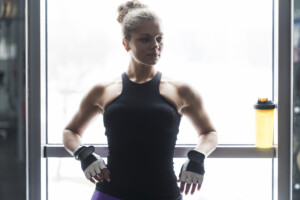
There’s no reason why autistic women can’t train their bodies to be strong, sturdy and ready to combat anxiety, depression and life’s curveballs.
Autistic Fitness: Yes, the fitter your body is, the more resilient will be your mental health.
I received my official diagnosis of Autism Spectrum Disorder in the spring of 2022.
Yet since high school I’ve been lifting weights. I continued lifting weights when I was in college, and have been strength training regularly since then as well.
Long before I began suspecting that I was on the Autism Spectrum, I’d been aware of a strange, odd disconnect I’ve always felt from other humans.
I’ve felt this way since grade school, and it became more pronounced as I got older.
In high school I decided to start lifting weights, using the “Universal” weight stack equipment that was in a room behind the gymnasium.
The only other students who used this contraption were the boys, namely the football players and wrestlers. I never saw any girls in there. SO WHAT. I didn’t let that stop me.
If my classmates were going to think I was “one of the odd kids,” then I made sure they sure as hell knew that I was the strongest odd kid!
So there I am, walking down the halls at school, wondering what kids think of me, but also knowing that I was stronger than all the girls!
I believe it was because of my weightlifting that I never delved into much masking.
As a result, I never experienced an autistic burnout. I’ve been keeping my body very strong all this time, and this translates to 1) better mental health, and 2) enough confidence in myself to eliminate the feeling that I must wear a heavy mask.
Why don’t more autistic women train with weights?
Though it seems that many autistic women report being clumsy, this shouldn’t interfere with strength training.
Though good form is crucial in strength training, there are also many exercises that can be done while seated, using machines that isolate muscle groups and help keep the body symmetrical while moving.
The body – whether it comes with an autistic brain or not – will respond to resistance training in a predictable fashion.
An autistic woman will achieve all the benefits of strength training that a neurotypical woman will. These include:
- A stronger musculoskeletal system
- Improved cardiovascular function
- Improved immune function
- Better sleep
- Reduced anxiety and depression
- Increased self-confidence
- Lower risk of disease
- Faster recovery from surgery
- Goes an incredible way at preventing osteoporosis/brittle bones
- Loss of unwanted excess fat; speeds up metabolism
- A shapelier, firmer body
- More stamina and ease at various activities such as gardening and housework
- Major carryover to the tasks of daily living such as moving a heavy potted plant, carrying a sick 50-pound dog to a car and gently setting him inside, helping a friend move, flipping a mattress, taking out the rubbish, shoveling snow and anything else that requires notable exertion.
I’ve been lifting hard and heavy since age 17. I’m a former certified personal trainer. I’m on the Autism Spectrum. Here are five strength training exercises that I strongly recommend for autistic women.
#1 The squat. There are many ways to do squats. Below are images showing different forms of this staple exercise.
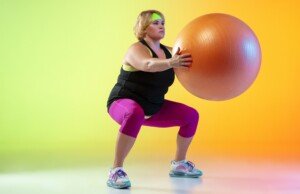
Bodyweight squat. Freepik.com/master1305
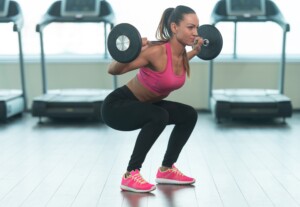
Barbell squat. Shutterstock/Jasminko Ibrakovic
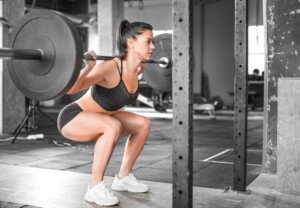
Heavier barbell squat. Shutterstock/B-Media
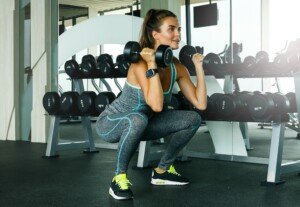
Dumbbell squat. Shutterstock/BLACKDAY
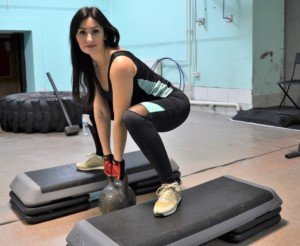
Kettlebell squat
#2 The deadlift. The catch is that in order to do a barbell deadlift, you need a barbell. If joining a gym is not possible, you can do deadlifts at home with a barbell set.
However, you can also do dumbbell and hex bar deadlifts. The hex bar allows you to use more weight, and it takes up less space than a seven-foot Olympic bar. See the images below.
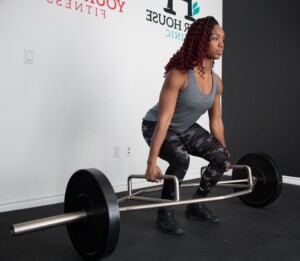
Hex bar deadlift
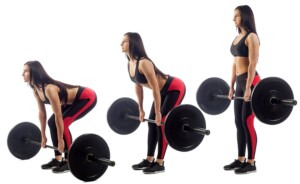
Barbell deadlift. Shutterstock/Everyonephoto Studio
#3 The chest press. Many fitness experts swear that the best form of chest press is the flat bench or incline bench version. But you can also use dumbbells.
If using a gym is not possible (where you can also use chest press machines), there’s plenty of hope here, because you can do flat and incline dumbbell presses off of a fitness ball in your home.
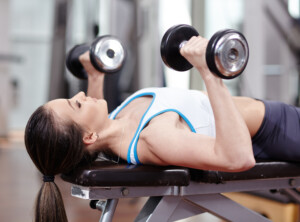
Dumbbell chest press. This can be also done lying on a big fitness ball. Shutterstock/Catalin Petolea
#4 The leg press. A leg press machine is required; these are found at gyms. A home leg press machine would take up a lot of space and is pricey.

Leg press. Freepik/master1305
#5 The seated row. There are numerous ways to “row.” I don’t mean an aerobic rowing machine. Do not confuse strength training rows with aerobic rows.
The seated row is shown below. The best mode for this is a gym machine. However, it can be done at home with a tension band (also shown).
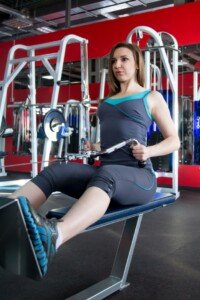
Seated row. Freepik.com/yanalya
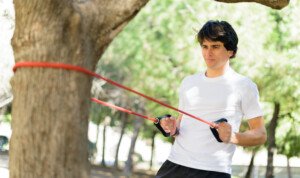
Tension band row. Shutterstock/Aaron Amat
Five Top Strength Training Exercises for Autistic Women if Objections Aren’t Considered
Objections include difficulty with a gym’s bright lights and crowds, and insufficient conditioning to perform the exercise.
But let’s suppose you’re okay with fluorescent lighting. Let’s suppose that crowds at a gym wouldn’t bother you, or that you can use the gym at a quieter time. Let’s suppose you wear earplugs.
#1 Barbell Deadlift
#2 Barbell Squat
#3 Flat or Incline Bench Press
#4 Standing Overhead Barbell Press
#5 Chin-up/Pull-up
If you can work up the strength to do chin-ups/pull-ups for reps, what a great achievement, because chin-ups and pull-ups are superb body-sculpting exercises that also target the core!
If you ask a fitness trainer to name the top five compound (multi-joint) exercises, they’ll likely say the barbell deadlift, barbell squat and flat bench press.
The variation will be in the remaining two, but usually, the remaining two will be a pulling movement (such as the lat pull-down, pictured below), or an overhead movement.
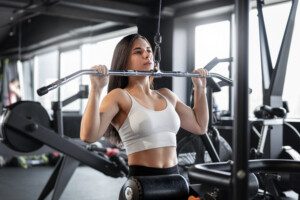
Lat pull-down. Freepik
All autistic women need to strength train, because ALL BODIES need to strength train.
ALL brains will benefit tremendously from strength training.
- This includes improved self-regulation.
Being autistic, quite bluntly, is no friggin’ excuse for letting your body get soft, weak, flabby and doughy.
And don’t think for a nanosecond that if you’re on the thin side, you don’t need to lift weights.
A woman can be a size 6 and still be quite out of shape, weak and tire easily. This isn’t about dress size. It’s about health and fitness.
If you’re obese, you need to strength train as much as a skinny woman. Every body needs resistance workouts.
It’s a Neurotypical World
Living in a world dominated by NTs can be daunting to some autistic people.
But let me tell you something: It’s a LOT easier to navigate an NT world when you have a strong back, strong shoulders, strong knees, strong arms and kickass-strong legs.
 Lorra Garrick has been covering medical and fitness topics for many years, having written thousands of articles for print magazines and websites, including as a ghostwriter. She’s also a former ACE-certified personal trainer. In 2022 she received a diagnosis of Level 1 Autism Spectrum Disorder.
Lorra Garrick has been covering medical and fitness topics for many years, having written thousands of articles for print magazines and websites, including as a ghostwriter. She’s also a former ACE-certified personal trainer. In 2022 she received a diagnosis of Level 1 Autism Spectrum Disorder.
.
























